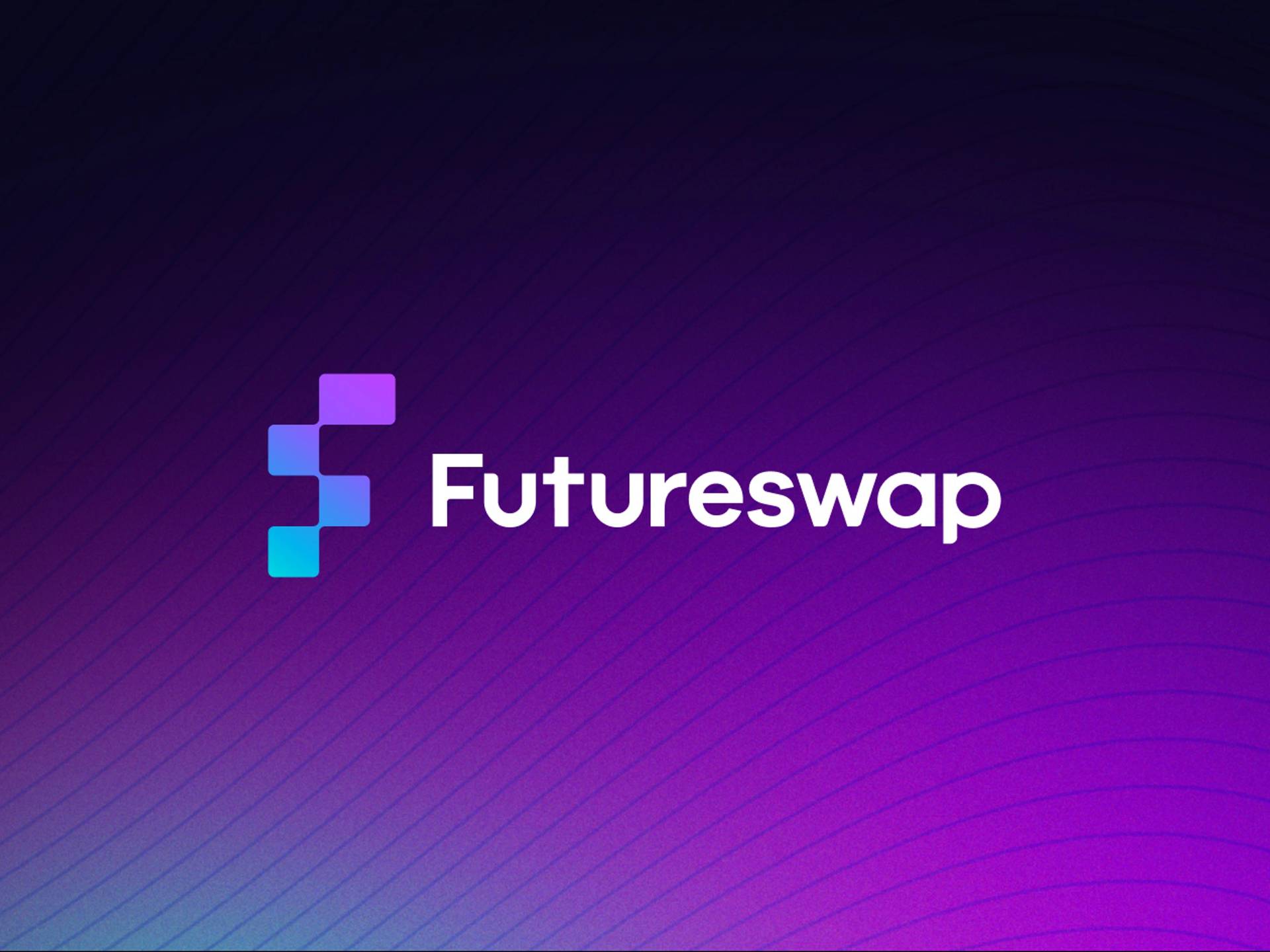위키 구독하기
Share wiki
Bookmark
Futureswap
Futureswap
Futureswap은 최대 30배 레버리지를 제공하는 자금 조달 비율 결제와 함께 자동화된 마켓 메이커(AMM)를 결합한 탈중앙화 비수탁 영구 프로토콜입니다.[1] 2021년 1월, Futureswap은 버전 2 출시를 발표했습니다.[2][3]
FutureSwap은 Arbitrum과 Avalanche에 구축되었으며, 탈중앙화 레버리지 거래소는 거래를 위한 최상의 실행 환경이 되는 데 중점을 둡니다. Futureswap은 전문 영구 거래자, 고수익 기회를 찾는 유동성 공급자, 혁신적인 dApp 구축에 동기를 부여받은 개발자를 위한 최고의 프로토콜입니다.[21][22]
개요
Futureswap은 높은 레버리지와 자본 효율적인 거래를 가능하게 하는 탈중앙화된 AMM 기반 프로토콜입니다. 사용자 관리 프로토콜이자 DEX로서 Futureswap은 완전히 허가 없이 구성 가능하며, 자본 효율성이 높고 동급 최고의 가격 실행을 제공하는 것을 목표로 합니다.
Futureswap은 2020년 4월 Ethereum에서 시작되었습니다. 첫날이 끝날 무렵 거래량은 210만 달러에 달했고 유동성은 50만 달러를 넘어섰습니다. 3일 이내에 Futureswap의 24시간 거래량은 710만 달러로 증가했고 유동성은 100만 달러를 넘어섰습니다.[4] 당시 Futureswap은 거래자에게 ETH–DAI 거래 쌍으로 시작하여 모든 Ethereum 기반 자산에 대해 최대 20배 레버리지와 슬리피지 없이 거래할 수 있는 기능을 제공했습니다.[5]
Futureswap에 대한 보안 감사는 OpenZeppelin에서 수행했습니다.[6]
2020년 3월, Futureswap 출시 전에 Framework Ventures는 Futureswap에 40만 달러를 투자했다고 밝혔습니다. Framework Ventures는 초기 유동성 풀에 디지털 자산을 추가하여 Futureswap 플랫폼에 유동성을 제공할 것이라고 확인했습니다.[7]
2021년 1월, Futureswap은 V2 베타 출시를 발표했습니다. Futureswap의 V2는 실시간 가격 책정, 더 나은 성능의 거래 및 더 높은 자본 효율성을 제공합니다. 자동화된 마켓 메이커 스타일의 유동성 제공, 인센티브 사용 및 커뮤니티 거버넌스와 같은 핵심 기능은 대부분 변경되지 않았습니다.[8] Futureswap의 공동 창립자인 Derek Alia는 CoinTelegraph와의 인터뷰에서 아이디어를 설명했습니다.
“AMM을 생각할 때 사람들은 Uniswap과 같은 상수 곱을 생각합니다. 우리와의 주요 차이점은 AMM을 가져와서 동일한 공식을 사용하지 않았다는 것입니다. 우리는 대규모 거래가 대규모 거래로 인해 불이익을 받아서는 안 된다는 논제를 중심으로 설계했으며, 이는 우리가 고래 거래자 또는 대규모 차익 거래자라고 부르는 사람들에게 더 나은 생태계를 만들 것입니다.”[9]
플랫폼 버전 2는 대규모 거래에 대한 자본 효율성을 높이는 고유한 오라클 설계를 특징으로 합니다. Futureswap의 오라클은 15초 간격으로 떨어져 있는 두 개의 Ethereum 블록 간의 작은 가격 변동을 캡처할 수 있다는 점에서 고유합니다. 다른 사람이 가스 요금을 지불할 수 있도록 하는 메타 트랜잭션과 유사한 메커니즘입니다. Futureswap 거래를 통해 사용자는 해당 트랜잭션을 만드는 데 사용한 오라클 가격 데이터를 포함하고 시스템은 트랜잭션이 생성될 때 값이 유효했음을 보장합니다. 오라클 가격을 앵커로 사용함으로써 플랫폼은 슬리피지가 낮은 훨씬 더 공격적인 본딩 곡선을 사용할 수 있습니다.[10]
다른 AMM과 마찬가지로 Futureswap에는 플랫폼을 통해 이루어지는 각 거래에 대해 수수료를 받는 수동적 유동성 공급자도 있습니다. 거래자는 최대 10배 레버리지로 롱 및 숏 포지션을 모두 입력할 수 있는 유동성 풀과 상호 작용합니다.[11]
오라클 릴레이어 네트워크(ORN)
Futureswap V2의 가장 주목할 만한 개선 사항 중 하나는 오라클 릴레이어 네트워크(ORN)입니다. 이를 통해 즉각적인 가격 책정 및 실시간 거래 경험이 가능합니다. ORN은 가격 오라클과 메타 트랜잭션 프로세서 노드 간의 메시로 생각할 수 있습니다. ORN은 서명된 메시지를 가져와 메시지가 유효한지 확인하고 현재 자산 가격으로 트랜잭션을 온체인에 넣습니다.[12]
사용자에게 완전한 제어 권한을 부여하고 정확하고 안전한 가격을 보장하기 위해 거래 가격의 범위는 사용자가 설정합니다. ORN 가격이 이러한 범위를 벗어나면 트랜잭션이 실패합니다.[13]
ORN은 Trail of Bits에서 감사를 받고 있습니다.[14]
FST 토큰
FST는 Futureswap의 양도 불가능한 거버넌스 토큰입니다. 거래자, 유동성 공급자 및 추천인은 매주 FST를 받아 시스템에서 보상을 받습니다. 릴리스 일정은 커뮤니티 투표에 따라 변경될 수 있지만 현재 주당 108,000 FST를 발행할 수 있습니다. 유동성 공급자로서 FST를 얻으려면 사용자는 주가 시작되기 전에 있어야 하고 주말 후에도 여전히 있어야 합니다. FST는 거래량에 따라 네트워크 참가자 간에 분할됩니다. 거래자 65%, 유동성 공급자 30%, 추천 5%입니다.[15]
토큰 배포
Futureswap 토큰은 사용자, 개발자, 투자자 및 팀의 네 그룹에 배포됩니다. Futureswap에는 거래자, 유동성 공급자 및 추천인의 세 가지 핵심 사용자 그룹이 있습니다.[16]
총 3천만 FST(총 30%)가 Futureswap 사용자에게 할당되어 거버넌스에서 강력한 발언권을 가질 수 있도록 합니다. 사용자 인센티브는 출시 후 처음 몇 주 동안 초기 프런트 로드(커뮤니티에서 투표한 대로)로 3년에 걸쳐 발행됩니다. FST 보유자는 인센티브 배포 일정, 교환 가중치 및 작업 가중치를 조정하기 위해 투표할 수 있습니다.[17]
개발 기금은 Futureswap 플랫폼에 가치를 가져다주는 그룹/개인에게 투표권을 할당하기 위해 9년에 걸쳐 토큰을 발행합니다. 개발 기금으로 예약된 총 1,800만 FST(총 18%)가 있습니다. 기금은 토큰 보유자가 관리합니다. 개발 기금에는 많은 목적이 있지만 FST는 양도할 수 없으므로 개발 기금은 보조금을 받는 사람들에게 더 많은 발언권을 제공하는 역할을 합니다.[18]
총 3,400만 FST(총 34.4%)가 현재 및 미래의 핵심 팀 구성원을 위해 예약되어 있으며 3년에 걸쳐 귀속됩니다. 이를 통해 Futureswap을 적극적으로 개발하는 팀이 거버넌스에서 발언권을 갖고 플랫폼에 중요한 추가 사항을 계속 추진할 수 있습니다.[19]
투자자는 2020년 4월 20일에 시작된 3년 귀속 일정으로 1,258만 FST(총 12.58%)를 보유합니다. Futureswap은 필요한 경우를 대비하여 추가로 500만 FST(총 5%)를 미래 라운드에 예약했습니다. 장기적인 사고방식을 가진 투자자를 유치하기 위해 예외 없이 모든 투자자는 3년 귀속 기간을 갖습니다.[20]
거래 수수료
Futureswap은 구성 가능한 0.05% 거래 수수료를 부과합니다. 실행 가격에 반영되는 0.05% Uniswap v3 거래 수수료도 있습니다. 총 거래 수수료는 청구 순서로 인해 0.1% 미만이 됩니다.[23]
팀 구성원
- Derek Alia - Futureswap 설립자
- Maxi Bustos - Futureswap CTO
- Oleksii Bobyr
- Jenny Nguyen - Futureswap 운영[24]
잘못된 내용이 있나요?
